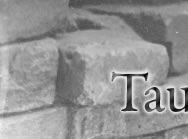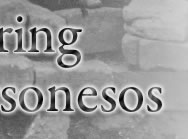| 1974 report of the excavation in the north-east area of Chersonesos |
| Year: 1974 |
|
Author
M. I. Zolotaryov
|
|
Description
North-east area of the ancient city is one of the most interesting regions of Chersonesos. The most important contribution to the invistigation of this area was made by R. Kh. Leper who excavated ther in 1908-1914. He investigated all quarters on the right side of the Main Street from the Eastern Basilica to St. Vladimir's Church, but almost seven decades passed from the time of R. Kh. Leper's excavations. During these years, the excavated areas were being destroyed by atmospheric effects. The necessity was ripe to make conservation and partial restoration of the site. It was 1974 when Chersonesos Museum started preparation of conservation and restoreation. These works require complete supplementary investigation of the monuments excavated before. These supplementary investigation was made in the first quarter on the left of the Main Street, in rooms adjoining transverse street II at the former Kane's Artillery Battery. 8 rooms total were under supplementary investigation in the period under report. In result of the works in the year under report in the first quarter of the north-east area of the ancient city and the analysis of the materials discoveredone can draw the following conclusions: the first building in the excavated area appeared in the third century BC and declined in the very end of the second century BC. No remains of earlier buildings have been discovered. The next stage of building dates from the second and third centuries AD. The layers from this period are well preserved. There is absolutely no layer from the turn of eras. The appearance of fish-salting complex dates from the mid-fifth century. This complex did not existas late as the ninth or tenth century. And finally, the latest stage of the building dates fromt he latest period.Stoneworks of rooms from the twelfth and thirteenth centuries are relatively well preserved. The layers from this period were removed by R. Kh. Leper's excavations. NPTC archive. File no. 1711. |





